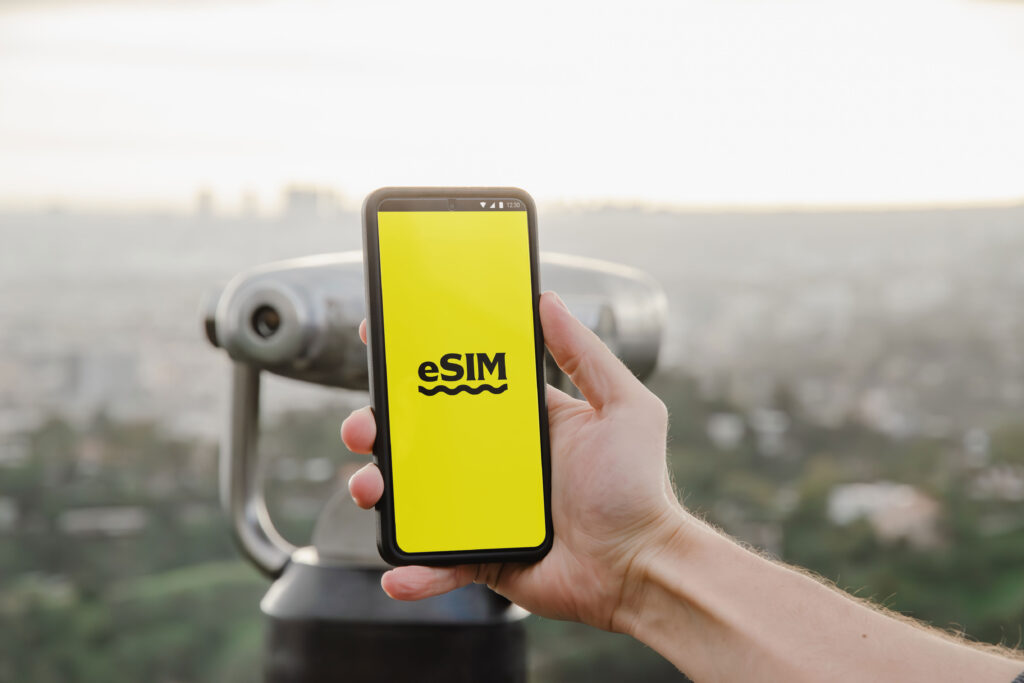Intro: 1
What are roaming charges?: 1
What is an eSIM?: 1
Why should you use an eSIM in [country]: 2
eSIM vs. regular SIM card: 2
Use cases: 2
How to choose & start using an eSIM 3
Recommended Saily review section: 3
Intro:
● An eSIM is a great option for travelers who want to avoid the hassle of
purchasing a physical SIM card or don’t want to overpay roaming charges.
● Just like a regular SIM card, an eSIM allows you to use data plans of
different providers.
● eSIMs have also became a viable option for people traveling to [country] for
both business and leisure purposes.
● It’s also important to know how to choose an eSIM that fits your needs, so
you would have the best experience for the cheapest price.

What are roaming charges?:
● Roaming charges are fees that mobile phone users incur when they use
their phone outside their home network’s geographical coverage area.
● These charges apply to calls, texts, and data usage and can be significantly
higher than domestic rates, often resulting in unexpectedly high bills for
travelers.
● Roaming fees are determined by your home network and the networks it
partners with abroad, and their cost structures can vary widely.
● However, it’s almost always cheaper to get an eSIM than to pay
roaming charges.
What is an eSIM?:
● An eSIM activates your cellular data plan just like a traditional SIM card.
● Users can switch service providers via software settings instead of
physically changing SIM cards.
● eSIM technology supports multiple service plans on a single device, ideal
for separating work and personal lines or adding international plans.
● Utilizing an eSIM helps avoid roaming charges and eliminates the need for a
physical SIM card purchase.
Why should you use an eSIM in [country]:
● eSIMs allow for cellular data activation like traditional SIM cards but enable
users to switch service providers digitally without needing a physical swap.
● With eSIM technology, users can maintain multiple service plans on a single
device, making it ideal for managing separate lines for work and personal
use, or for adding international plans without affecting the main service.
● Using an eSIM helps avoid roaming charges, which are costly fees incurred
when using a phone outside the home network’s area, applicable to calls,
texts, and data usage.
● Roaming fees are often significantly higher than domestic rates, leading to
unexpectedly high bills for travelers.
● Opting for an eSIM can be more cost-effective than paying high roaming
charges, providing convenience and savings, especially for frequent
travelers.
eSIM vs. regular SIM card:
● eSIMs support digital activation and plan switching, eliminating the need for
physical SIM cards that require manual exchanges.
● The use of eSIMs reduces the hassle of acquiring a SIM, such as visiting
stores or dealing with street vendors, which often results in higher costs and
potential scams for tourists.
● Unlike traditional SIM cards that are limited to a single profile, eSIMs can
store multiple carrier profiles, offering greater flexibility and convenience.
● eSIMs allow users to conveniently purchase and manage data plans from
home, making it easier to adjust data usage based on needs without
physical constraints.
● If an eSIM user runs out of data, they can immediately top up their plans
online, ensuring continuous internet access without any interruptions.
● Traditional SIM cards contribute significantly to environmental waste,
generating approximately 18,000 tonnes of plastic waste and 560,000
tonnes of CO2 emissions annually, which eSIM technology can help reduce.
Use cases:
● Travelers benefit from eSIMs by subscribing to local data plans, avoiding
roaming charges without needing multiple SIM cards.
● eSIM is also a perfect choice for short-term visits, such as business trips,
conferences, etc.
● Whether it’s a long or short-term stay, choosing an eSIM plan over
purchasing a physical SIM card is not only easier but often also cheaper.
● Furthermore, using an eSIM, you’ll be able to avoid having to connect to
public Wi-Fi services at airports or cafes, which can be used by hackers to
steal your personal information or monitor online activities.
How to choose & start using an eSIM
● In order to start using an eSIM data plan, first, you have to find out whether
your phone supports this feature.
● Most phones manufactured after 2018 do. However, to be sure, you can find
it by checking your phone’s settings (this differs depending on your phone
model).
● Suggest choosing an eSIM proven based on several factors:
● Whether it supports data plans in your country of destination;
● Plan flexibility (most providers offer different plans based on the
length and amount of data (GB) provided);
● Price;
● Customer support – preferably 24/7 (if you’re a first-time eSIM user,
you may have questions about how everything works. However, Saily
makes everything really straightforward, as each step is explained in
detail, making the process easy even for non-techy people).
● When you’ve chosen an eSIM service provider, download the app, create an
account, add payment information, and select your preferred country of
destination plan (length, amount).
● Follow the on-screen instructions to complete the installation.
● Important: to activate your eSIM, you will need to have access to an internet
connection.
Recommended Saily review section:
● Saily is a product from Nord Security.
● Nord Security’s other products include NordVPN, NordPass (password
manager), NordLocker (file encryption and storing tool), NordLayer
(business VPN), and NordStellar (Threat exposure manager for business).
● Saily covers over 150 countries and territories, including [country].
● 24/7 customer support is available.
● Installing and using Saily is easy and straightforward. The app is available
on AppStore and Google Play.
● With Saily, the eSIM must be installed only once, eliminating the need for
users to install a new eSIM for each country they visit.
● Additionally, users can easily top up their plan and continue using the
services without interruption if they run out of data.
